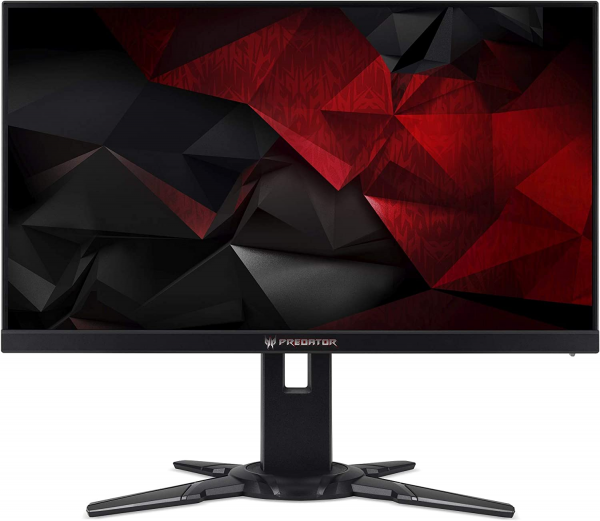Acer
Acer Predator XB252Q: the first 240 Hz G-Sync monitor
Aprox. 527€
See specificationsIf you are looking for a G-Sync 240 Hz compatible monitor, you do not really have a choice: the Acer Predator XB252Q is currently the only one in this niche. Let's see what it's worth ...
Positive points
240 Hz native frequency.
G-Sync compatibility.
Reactivity of the slab.
Faithful image by default (color, temperature and gamma).
Ergonomics.
Backlight scan (ULMB).
Bad points
Reduced viewing angles.
Limited connectivity.
Backlight scan (ULMB) limited to 120 Hz.
Our review
Presentation
The Acer Predator XB252Q uses the same panel as the BenQ Zowie XL2540 and AOC Agon AG251FZ screens: a 25-inch Full HD TN panel (1920 x 1080 px) supporting a refresh rate of 240 Hz. It stands out from its competitors by its G -Sync compatibility which avoids the problems inherent in vertical synchronization, such as tearing of the image (tearing) and micro-slowdowns, but only when using a GeForce graphics card from Nvidia. We therefore expect high performance.
The Acer Predator XB252Q monitor is sold for around € 600, which is € 100 more than the BenQ Zowie XL2540 and AOC Agon AG251FZ sold for around € 500.
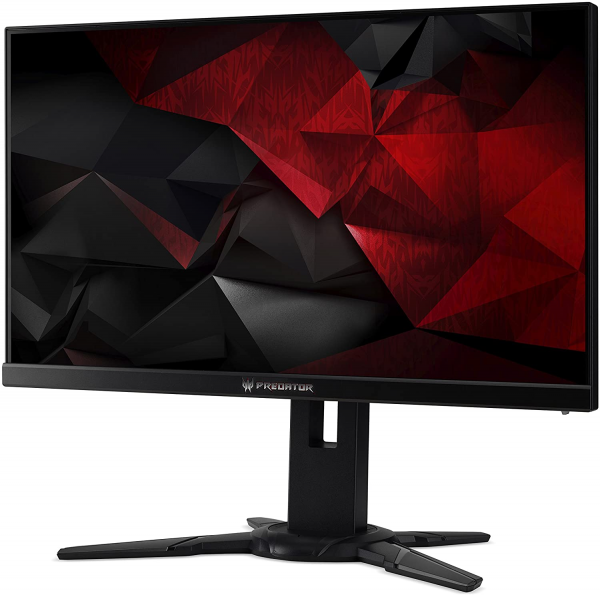
Ergonomics
The Acer Predator XB252Q monitor is completely black, except for a small touch of red on the Predator logo at the base of the panel. The foot is ultimately the only element whose aggressive design suggests gaming orientation.
The TN panel has a matt treatment which eliminates almost all of the reflections.
The rear is even more sober and simply resembles that of a classic office monitor. On this model, no LEDs or small accessories for players, such as a removable lug for hanging a helmet or a remote control that can be found at AOC, for example.
The stand ensures good stability of the monitor and also allows rotation through ± 45 °. The amplitude is good, but the finish of the foot leaves something to be desired. It is entirely made of plastic, with a metal insert to make it heavier.
The monitor is adjustable in height by 11.5 cm and in inclination from -5 ° to + 21 °. The pivot also allows the transition to portrait orientation, also used to access the connectors more quickly.
As on all G-Sync monitors on the market, the connectivity is quite limited. You have to settle for an HDMI input and a DisplayPort input. There is also a USB 3.0 hub with two ports behind the screen and two others on the side. At the audio level, this monitor has a headphone output - which we would have preferred on the side - and built-in speakers. These are sufficient for watching videos on YouTube, but they do not replace a dedicated speaker kit. Finally, the power supply is integrated into the monitor.
For access to the screen settings, Acer opted for a joystick and four additional buttons, including one for turning on the power. In practice, the joystick provides access to the most complex settings while the other three buttons are used to access the presets and change the source. It is not always practical to juggle between the two and we would have preferred that Acer focused only on the use with the joystick.
With a white set at 150 cd / m² on our test pattern, the Acer Predator XB252Q consumes 22 watts, ie a relative consumption of 128 W / m², much higher than the average consumption of the monitors tested (100 W / m²) and even to that of its main competitors (16 watts for the Agon AG251FZ and 17 watts for the BenQ Zowie XL2540. At a minimum, the monitor consumes 10 watts (10 cd / m²) and 30 watts maximum (435 cd / m²).
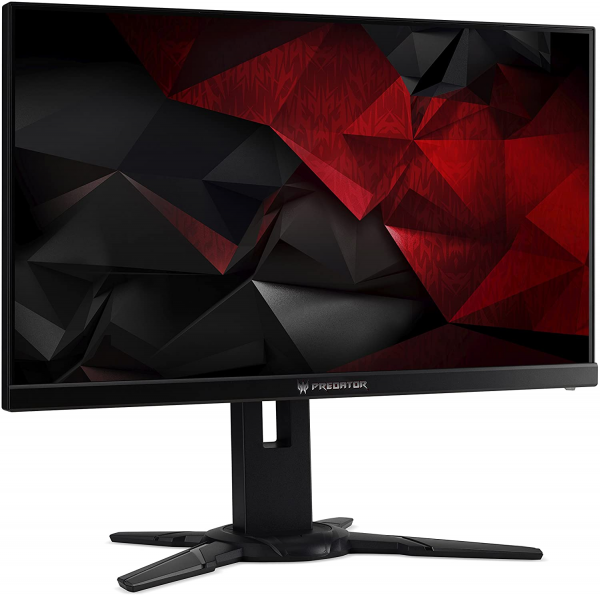
Colors and contrast
Default: average temperature at 6.320 K
Default: gamma curve at 2.2
Default: Delta E average at 2.2
Leaving the factory, the Acer Predator XB252Q monitor is fairly well calibrated, especially compared to its direct competitors who had clearly skipped this step. The temperature is fairly stable over the entire spectrum and the average (6.320 K) is relatively close to the reference value (6.500 K). The gamma curve lacks stability, especially on the first part of the spectrum, which results in overexposed light gray. Despite this, the average remains at 2.2. Finally, the colors can be considered as faithful (average delta E of 2.2). Only three colors (red, green and yellow) display a delta E greater than 3 - below which the human eye can no longer tell the difference between the displayed colors and the ideal colors.
Manual setting: average temperature at 6,290 K
Manual adjustment: gamma curve at 2.2
Manual setting: Average Delta E at 2.2
In order to obtain a white close to 150 cd / m², we lowered the brightness to 13. We did not find a setting allowing the gamma defect to be corrected. The curves therefore remain the same. Only the temperature drops slightly. The rendering is still quite good, especially for a monitor intended primarily for players.
Default: average temperature at 6,290 K
Default: gamma curve at 2.2
Default: Delta E medium to 2
Starting from the previous settings, we calibrated the screen using a calibration probe and suitable software. This smooths the temperature and gamma curves. The temperature always remains slightly below the reference value (6,500 K). The colors are slightly more faithful, with a delta E of only 2; red and green always show a fairly large drift. Our calibration profile is available at this link.
In absolute terms, the contrast is quite low, but for a TN panel, it does quite well. We measured it at 990: 1, compared to 840: 1 for the BenQ Zowie XL2540 and only 670: 1 for the Agon AG251FZ. Blacks therefore appear gray. In comparison, the best models manage to exceed 4000: 1, like the Eizo Foris FG2421 or the Philips BDM4037UW.
The average difference in white is only 9% on the entire screen, a fairly average value for a screen of only 25 inches. TN technology requires, the viewing angles are very reduced. Even when facing the screen, you can observe a gradient from top to bottom over an area that should be uniform.
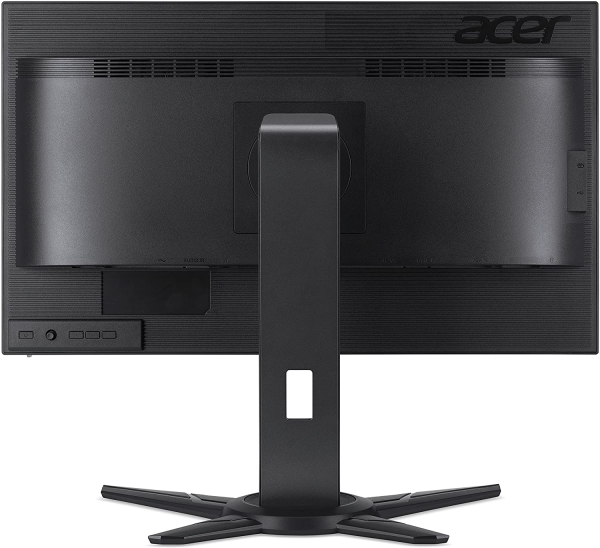
Reactivity
The Acer Predator XB252Q screen does not use Pulse Width Modulation (PWM) to vary its brightness. This helps prevent flickering from the dim light that causes headaches and eye strain in some people. So there is no problem with this monitor.
This monitor is compatible with G-Sync technology between 48 and 240 Hz and it therefore works optimally when the graphics card sends between 48 and 240 images per second. In this case, the fluidity is there and the image does not suffer from tearing problems or jerks (micro-stuttering). Ultra Low Motion Blur mode improves the sharpness of moving objects by scanning the backlight, but it is not compatible with G-Sync. It's one or the other. In addition, the ULMB only operates at a frequency of 120 Hz.
The TN panel is very reactive (average remanence time of 3.5 ms). By default, the overdrive is set to the medium setting which gives good results. Ghosting is very weak. Switching to the extreme setting results in a rather annoying reverse ghosting phenomenon. The remanence time of 3.5 ms allows the pixels to change state more than 280 times per second and the monitor can therefore display 240 images per second.
Finally, the delay in display measured at 15.6 ms makes the difference between the image generated by the graphics card and that displayed on the screen almost imperceptible. This remains higher than the 10 ms of other monitors, but it is also the case of the Zowie XL2540 and the Agon AG251FZ. This slightly above average input lag is probably due to the slab used.
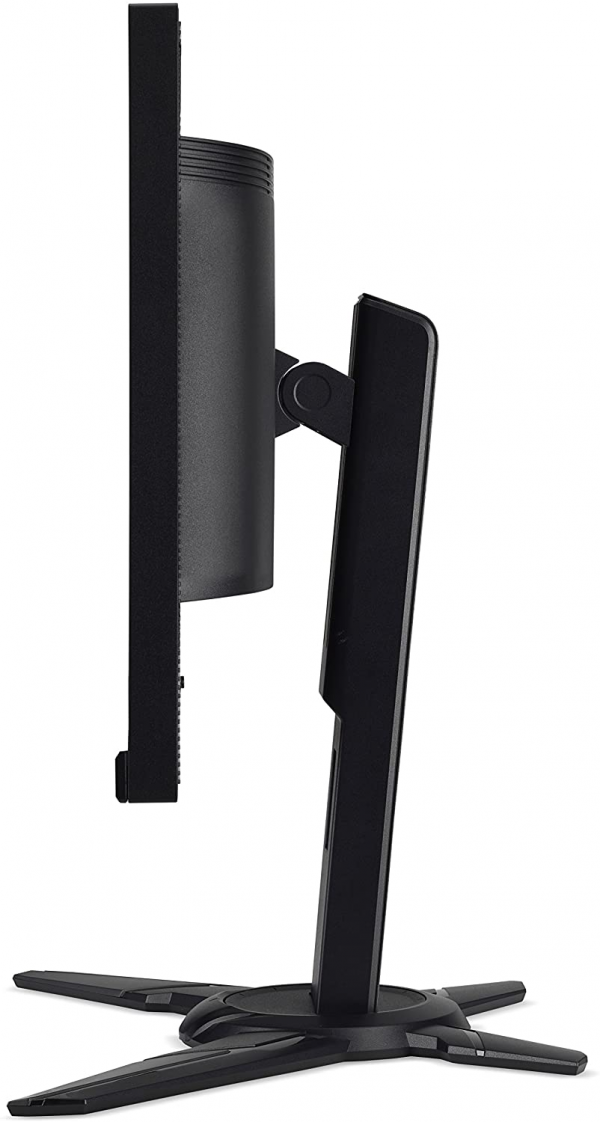
Conclusion
The Acer Predator XB252Q is a very responsive monitor and will satisfy players eager for performance. It stands out from the competition by its image quality at the factory and its G-Sync compatibility which will delight owners of GeForce cards. We can simply blame it for its reduced viewing angles and its limited connectivity, common to all G-Sync monitors.
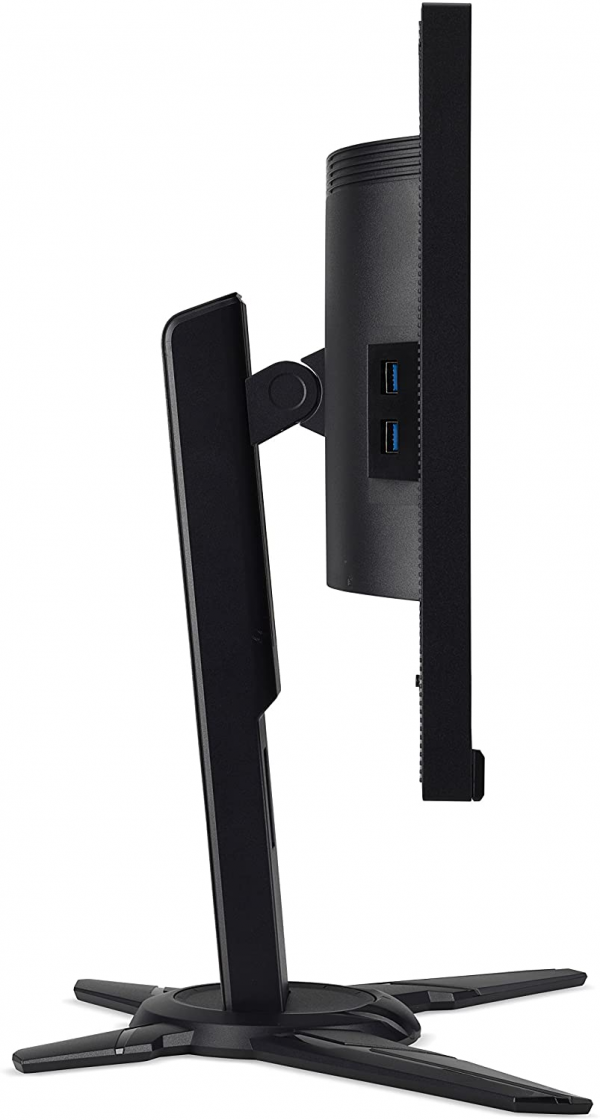
Specifications

